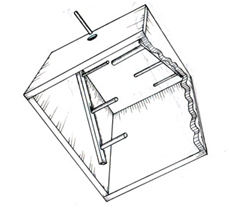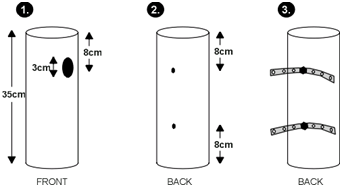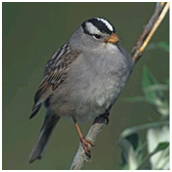 Do you ever wonder where birds sleep? On a cold winter night, when the wind is blowing the snow sideways across the light of your street lamps, the chickadees that visited your feeder in the morning are huddling close together. Hopefully they have found a decent cavity to roost in. If your neighborhood is like mine, a dead tree is considered a hazard and is quickly removed to prevent damage to houses. The valuable cavities in a dead tree are eliminated in most urban and suburban areas where dead trees are not allowed to stand.
Do you ever wonder where birds sleep? On a cold winter night, when the wind is blowing the snow sideways across the light of your street lamps, the chickadees that visited your feeder in the morning are huddling close together. Hopefully they have found a decent cavity to roost in. If your neighborhood is like mine, a dead tree is considered a hazard and is quickly removed to prevent damage to houses. The valuable cavities in a dead tree are eliminated in most urban and suburban areas where dead trees are not allowed to stand.
What can you do for the local birds that are looking for a place out of the frigid cold? Consider a roost box. While a nest box is flat inside and provides room for a nest, a roost box has a series of pegs that serve as perches with a roof overhead. Roost boxes are designed to provide a simple shelter for birds where they can sleep together with some relief from the cold and use their collective body heat to keep warm. Roost boxes often look very similar to nest boxes. Different size entrance holes provide shelter for different types of birds. A smaller hole invites smaller birds, such  as sparrows, nuthatches and titmice, while a larger hold can accommodate flickers and small hawks. Smaller birds loose body heat very fast, but in a roost they can keep each other warm by staying close together.
as sparrows, nuthatches and titmice, while a larger hold can accommodate flickers and small hawks. Smaller birds loose body heat very fast, but in a roost they can keep each other warm by staying close together.
Owls can use the same box they nested in as a roost box in winter. Other birds, such as chickadees, can roost in a PVC pipe roost that you can easily make yourself. Click on the picture for simple instructions on how to build a chickadee roost.
Here is a great website from Audubon Society of Omaha that provides instructions for those of you who would really like to build your own roost boxes, and nest boxes too.
While a bird feeder may provide the wintering birds with food, they also need shelter to make it  through the winter. Roost boxes can help attract more birds to your area, and can keep them warm and safe through the cold nights.
through the winter. Roost boxes can help attract more birds to your area, and can keep them warm and safe through the cold nights.
| A White-crowned Sparrow could find shelter in your roost box Photo credit: Stan Tekiela |